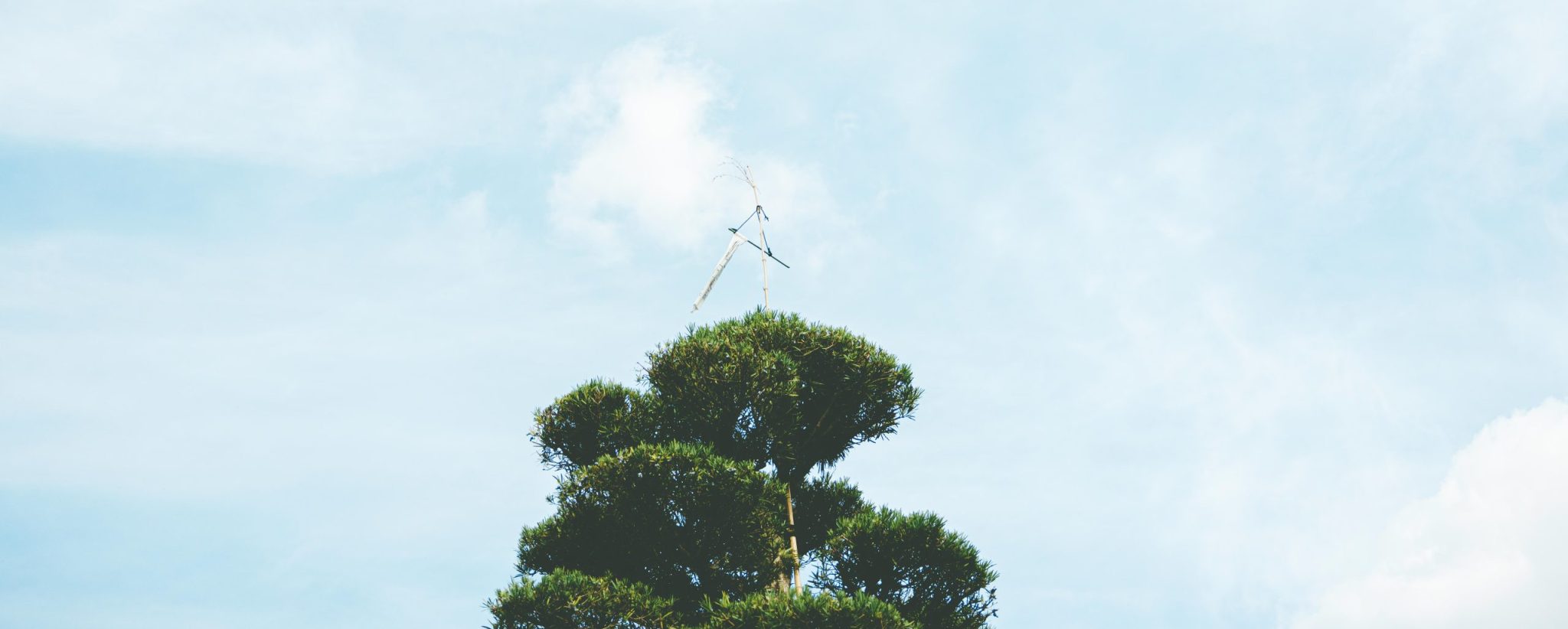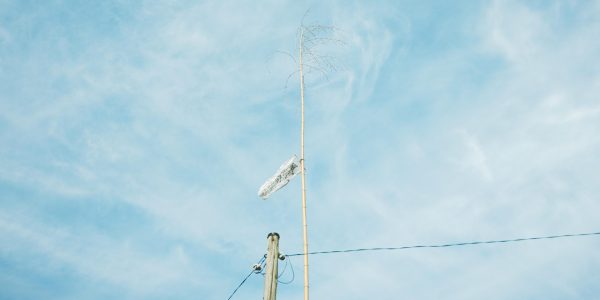
Introduction:
Tanushimaru offers a unique opportunity to experience the diverse nature of Shinto rituals. Within a small radius, you can find fascinating variations of the same ritual practiced in different districts. This article explores the "Kaze-dome" (Wind Calming Festival) as an example.
The Kaze-dome:
Held from late June to July, the Kaze-dome prays for protection against crop damage caused by heavy rain and typhoons, as well as the spread of disease during the rainy season. It is observed in various areas of Tanushimaru, including the central districts of Nuda, Chūjakan, and Kuchidaka, as well as the Kawai region to the west and the Shibakari region facing the Chikugo River.
Variations in Ritual Practices:
In some shrines, a bamboo pole is tied to a tree in the shrine grounds, and a prayer flag inscribed with "Bountiful Harvest and Locust Extermination" is hoisted at the top. While many places use a crane lift for this task, in the Nuda district, the tradition of people climbing the tree to raise the flag still persists. In other districts, the flag may not be raised at all, although this may have been the practice in the past.
Boundary Protection and Symbolism:
To ward off evil spirits and disease, gohei (sacred streamers) and/or Yakuyoke-bashira (apotropaic pillars) are erected at the boundaries of each district. The gohei may be decorated with shide (sacred paper decoration) or have o-fuda (amulets) attached to the bamboo sticks, with variations observed between different districts.

Yakuyoke-bashira (Apotropaic Pillars):
The Yakuyoke-bashira (apotropaic pillars) also vary in design, with some retaining side branches of bamboo poles and others incorporating small bamboo bottles filled with o-miki (sacred sake). The placement of these pillars also varies, from being placed along roadsides to within the premises of households, or even attached to traffic signs or telegraph poles.
Fusion of Rituals:
In some cases, the Kaze-dome has merged with other rituals. In the Saigō, Imamura, and Maki districts, apotropaic gohei are erected as part of the "Chi no Wa Kuguri" ritual, where people pass through a sacred circle of Kaya reeds to pray for purification and good health. While the locals may not identify this as the Kaze-dome, the o-fuda used in the ritual bears the inscription "Kaze-dome Matsuri." Conversely, in the Yanase district, passing the Chi no Wa circle is performed during the Kaze-dome.
Transformation and Fusion Over Time:
It is likely that these two rituals merged at some point, as both aim to ward off disease and pray for good health. In some cases, only the name of the “Kaze-dome Matsuri” remains. For example, the "Kaze Matsuri" in the Tokudō district is recorded as a Kaze-dome in Kurume City's research materials, but no prayer flags or gohei are raised in this particular observance.
Testament to Rich Cultural Heritage:
The diverse nature of Shinto rituals in Tanushimaru is a testament to the rich cultural heritage of the region. By observing these rituals, visitors can gain a deeper understanding of Japanese traditions and beliefs, and experience the unique charm of this captivating town.



